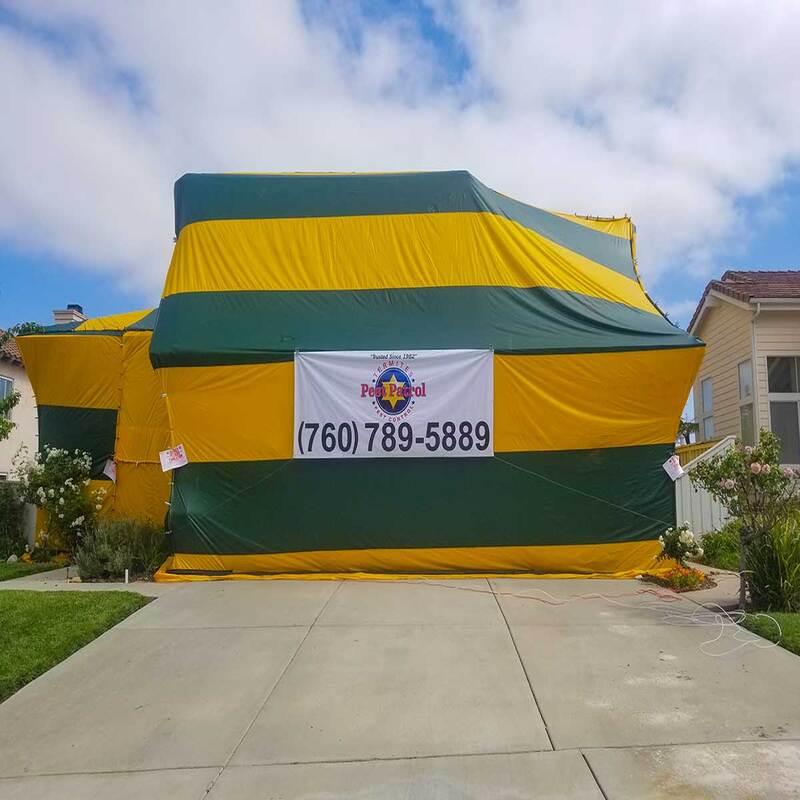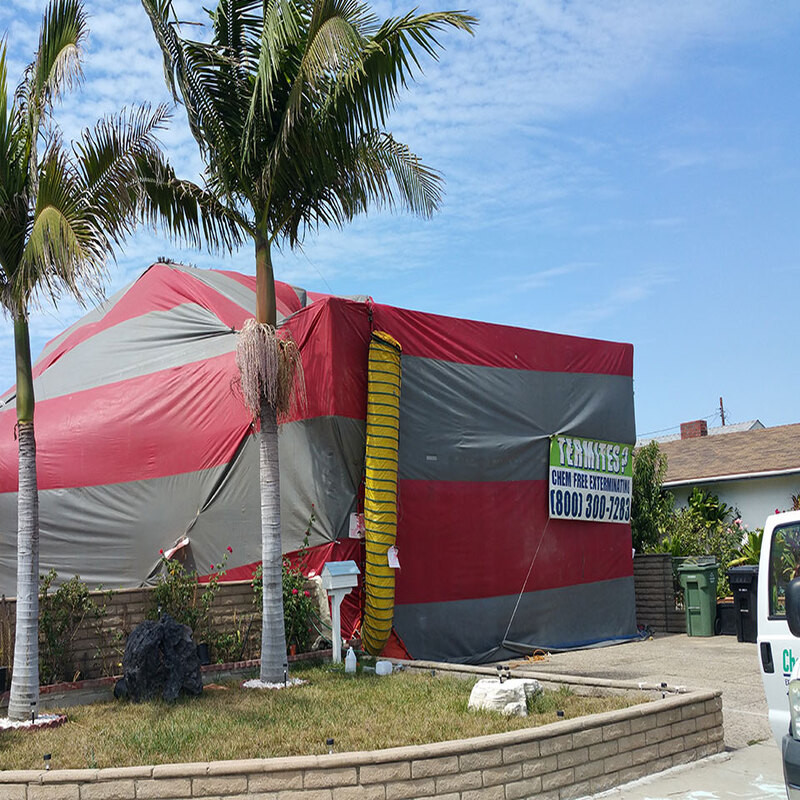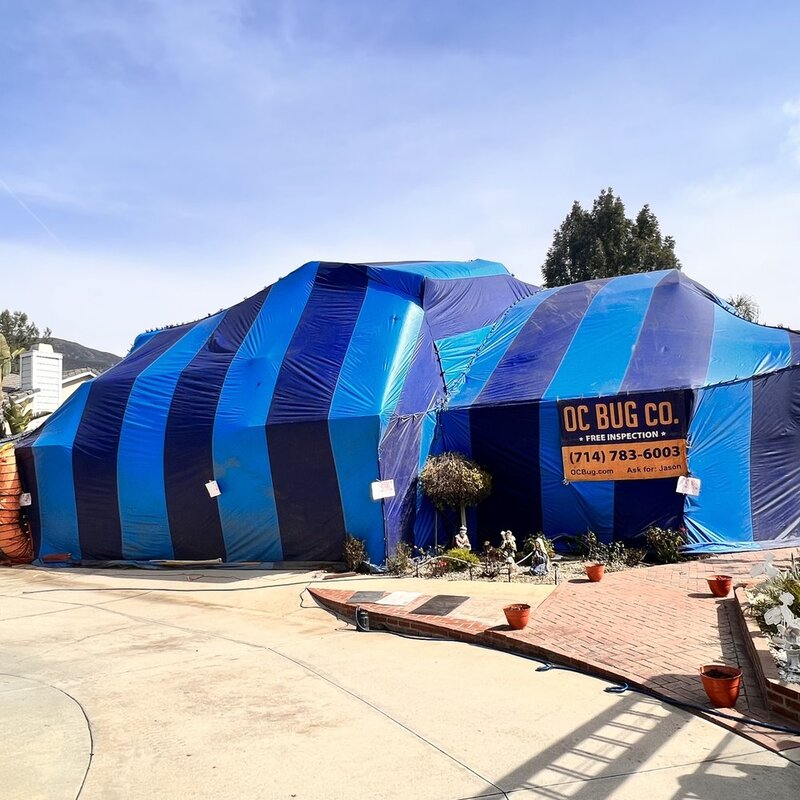Understanding the Need for Tent Fumigation
Termites, often dubbed “silent destroyers,” can wreak havoc on your home’s structure without any visible signs until significant damage has already occurred. These wood-destroying insects can compromise the integrity of your house, leading to costly repairs if left untreated. Tent fumigation, also known as whole-structure fumigation, is a highly effective treatment method to eliminate drywood termite infestations. This process involves completely enclosing your home with a specialized tarp and releasing a fumigant gas to penetrate every nook and cranny, effectively eradicating the termites within. While tent fumigation is undoubtedly an effective solution, it’s essential to understand the associated costs before making an informed decision. How much to tent a house for termites?
Several factors influence the overall expense, including the size of your house, the severity of the infestation, the specific fumigant used, and your geographical location. Moreover, additional services like pre-treatment inspections, post-treatment ventilation, and necessary repairs can also impact the final price tag.
Factors Influencing Tent House for Termites
House Size: The Primary Cost Driver
Undoubtedly, the most significant factor influencing tent fumigation costs is the size of your house. Fumigation companies typically calculate their fees based on the cubic footage of the structure. Consequently, a larger house requires more fumigant and tarp material, translating to higher labor and material costs. For instance, a small, single-story house might cost significantly less to tent compared to a sprawling, multi-story home. Therefore, understanding your house’s square footage is crucial when obtaining quotes from fumigation companies, allowing you to accurately compare pricing and make informed decisions.
Severity of Termite Infestation: A Determining Factor
While house size plays a major role in determining fumigation costs, the severity of the termite infestation is another crucial aspect. A minor infestation localized to a specific area might require less fumigant and a shorter fumigation period, resulting in lower overall costs. Conversely, a widespread infestation affecting multiple areas of your home necessitates a more intensive treatment, potentially involving a higher concentration of fumigant and a longer fumigation duration. This, in turn, leads to higher labor and material expenses. Therefore, a thorough inspection by a qualified pest control professional is essential to assess the extent of the infestation and provide an accurate cost estimate.
Geographical Location: Influencing Labor and Material Costs
Your geographical location can significantly impact tent house for termites costs due to variations in labor and material expenses. Regions with higher labor costs or those requiring specialized equipment for challenging terrains might experience inflated pricing. Similarly, areas with stricter regulations or limited availability of specific fumigants might encounter increased material expenses.

Additional Costs to Consider
Pre-Treatment Inspections and Preparations: Essential Steps
Before the actual fumigation process, certain preparations are necessary to ensure its effectiveness and safety. These preparations often involve pre-treatment inspections, where a qualified pest control professional thoroughly assesses the extent of the infestation and identifies potential entry points for termites. Additionally, you might need to remove or properly seal food items, medications, plants, and other sensitive belongings to prevent contamination from the fumigant. These pre-treatment inspections and preparations, while essential, can add to the overall cost, so factoring them into your budget is important.
Post-Treatment Ventilation and Air Quality Testing: Ensuring Safety
Once the fumigation process is complete, thorough ventilation of your home is crucial to remove any residual fumigant gas and ensure a safe environment for re-entry. This typically involves using industrial fans to circulate fresh air throughout the house for several hours. In some cases, air quality testing might be necessary to verify that fumigant levels are within safe limits. These post-treatment procedures, though essential for your safety, add to the overall cost. It’s crucial to discuss the expected duration of ventilation and the potential need for air quality testing with your chosen pest control professional.
Necessary Repairs and Prevention Measures: Addressing Root Causes
Termite infestations often highlight underlying issues within your home’s structure that might have attracted these wood-destroying insects in the first place. Addressing these root causes is crucial to prevent future infestations and ensure the long-term effectiveness of the fumigation treatment. This might involve repairing damaged wood, addressing moisture problems, sealing entry points, and implementing preventative measures like termite barriers. The cost of these repairs and preventative measures can vary significantly depending on the extent of the damage and the complexity of the solutions required.
Obtaining Accurate Cost Estimates
Consulting with Reputable Pest Control Professionals: Seeking Expertise
Given the numerous factors influencing tent fumigation costs, obtaining accurate estimates from reputable pest control professionals is paramount. Reputable companies offer free inspections and provide detailed, transparent quotes outlining all associated costs. Don’t hesitate to inquire about their experience, licensing, insurance coverage, and any guarantees offered. Seek recommendations from friends, family, or online reviews to identify trustworthy providers in your area.
Requesting Detailed, Itemized Quotes: Ensuring Transparency
When requesting quotes from pest control companies, insist on detailed, itemized breakdowns of all costs involved. This ensures transparency and allows you to compare different proposals effectively. Clarify any uncertainties or discrepancies in the quotes before committing to a specific provider. Understanding the specifics of each cost component empowers you to make informed decisions and avoid hidden fees or surprises later on.

Cost-Saving Tips for Tent Fumigation
Early Detection and Treatment: Minimizing Infestation Severity
One of the most effective ways to minimize tent fumigation costs is through early detection and treatment of termite infestations. Regularly inspecting your home for signs of termite activity, such as mud tubes, discarded wings, or wood damage, allows for prompt intervention. Addressing infestations in their early stages typically requires less extensive treatments, resulting in lower overall costs. Implementing preventative measures like termite barriers can also help deter infestations and potentially reduce the need for costly fumigations in the future.
Exploring Alternative Treatment Options: Considering Other Solutions
While tent fumigation is a highly effective method for eradicating drywood termite infestations, exploring alternative treatment options might be worthwhile depending on the specific circumstances. Localized treatments, such as spot treatments or heat treatments, target specific areas of infestation and can be more cost-effective for smaller, contained problems. However, these alternatives might not be suitable for widespread infestations. Consulting with a qualified pest control professional is essential to determine the most appropriate and cost-effective solution for your specific situation.
Utilizing Insurance Coverage: Checking for Potential Benefits
Depending on your homeowner’s insurance policy, you might have coverage for termite damage and the associated treatment costs. Review your policy carefully or contact your insurance provider to determine if tent fumigation or alternative treatments fall under your coverage. Keep in mind that insurance policies vary significantly, and coverage for termite-related issues is not guaranteed. Documenting any signs of termite damage and maintaining detailed records of inspections, treatments, and associated costs strengthens your case for potential insurance claims.

Conclusion: Weighing Costs and Benefits
Deciding to tent your house for termites is a significant decision that requires careful consideration of both the costs and benefits. While tent fumigation can be an expensive undertaking, it offers a highly effective solution for eliminating drywood termite infestations and protecting your home from further damage. By understanding the various factors influencing costs, obtaining accurate estimates, and exploring potential cost-saving measures, you can make informed decisions that safeguard both your home and your finances. Remember, early detection and proactive measures are crucial in minimizing the impact of termite infestations and potentially reducing the need for costly treatments in the future.
